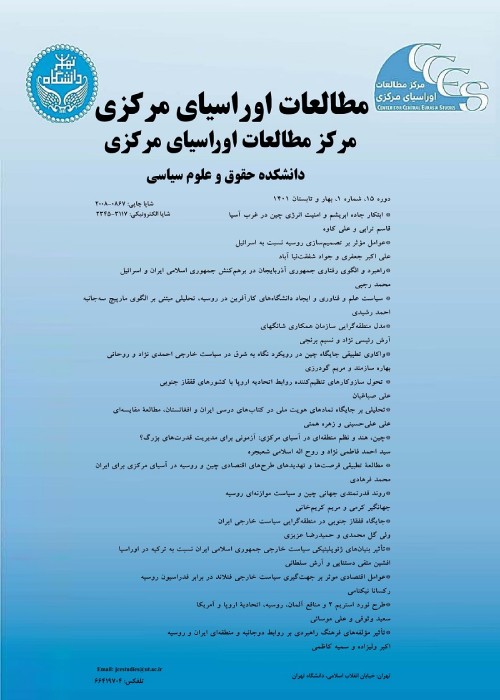The Determinative Factors of Iran’s Relation with the Central Asian Republic from Political Economy Perspective (Case Study: Turkmenistan and Tajikistan)
The Emergence of the new Independent States in the Northeastern Region of Iran has provided a variety of opportunities and challenges to this country. Iran’s Economic Relation with central Asian republics has dramatically fluctuated in recent decades due to the effects of different factors. A combination of factors such as common historical ties, the impact of the security situation in the region, Muslim population and economic attractions, has highlighted the importance of developing relations with Central Asian countries. In this regard, Iran’s relations with Central Asian countries have been affected by bilateral, regional, and international developments. < p class="a">The main question that has been raised in this study from the political economy perspective is which bilateral, regional, and international factors have had a prominent role in forming Iran relations with central Asian republics? The hypothesis is that in comparison with international and regional factors, bilateral factors have had a prominent role in forming the nature of Iran’s relation with those countries. Bilateral issues like tensions with Turkmenistan in connection with the gas prices and with Tajikistan regarding the Islamic Resistance party and the negative historical memory that originated from Babak Zanjani’s Money laundering have immensely affected Iran’s relations with these countries. These bilateral issues have shown their effects on Iran’s economic relations with these countries since 2013 and again intensified in 2016, so the value of Iran’s export to Turkmenistan decreased from 1 billion dollars in 2014 to 400 million dollars in 2018. < p class="a">Interestingly, during the previous sanctions regime, which was intensified in 2012, we saw an upward trend in the value of Iran’s exports to Turkmenistan. Corresponding to Tajikistan, the value of Iran’s export to this country decreased from about 217 million dollars in 2017 to 78 million dollars in 2018 before the US withdrawal from the Joint Comprehensive Plan of Action (JCPOA) and the imposition of new sanctions against Iran. This subject shows the critical role of bilateral factors in comparison with regional and international ones. Expanding cooperation in the fields of trade, mutual investment, energy, and agriculture are counted as the main context for cooperation with these countries. Strategies such as trying to reconcile bilateral issues and building trust through active political and public diplomacy, adopting multilateral diplomacy for multilateral economic cooperation with economically influential countries, cooperating with these countries in the field of extraterritorial cultivation and implementing free trade agreements with Turkmenistan and Tajikistan are proposed to strengthen Iran’s economic security concerning these countries. < p class="a">Regarding the regional variables, most experts consider the Russian factor and its sensitivities to its Near-abroad as the main obstacle to the expansion of relations with Central Asian countries. In this regard, Russia cannot tolerate the presence of other regional powers in Central Asia due to the importance of its near-abroad, including Central Asia, in its foreign policy doctrine. Nevertheless, the study of Turkmenistan and Tajikistan’s trading partners shows the strong presence of China, Turkey and European countries in their trade and economy. Therefore, although Russia is particularly sensitive to the presence of other powers in the region in the security, military-economic and trade spheres, it is gradually accepting the presence of other regional and international players. Therefore, regional variables and Russia’s factor cannot be considered as determining factors with regard to Iran’s economic relations with Central Asian countries. < p class="a">Corresponding to the international factors, given that the US economic ties with Tajikistan and Turkmenistan are weak, their economic ties with Iran are less affected by the US sanctions. In this research, an attempt has been made to examine each variable by using descriptive, analytical and positivist methods.
- حق عضویت دریافتی صرف حمایت از نشریات عضو و نگهداری، تکمیل و توسعه مگیران میشود.
- پرداخت حق اشتراک و دانلود مقالات اجازه بازنشر آن در سایر رسانههای چاپی و دیجیتال را به کاربر نمیدهد.



